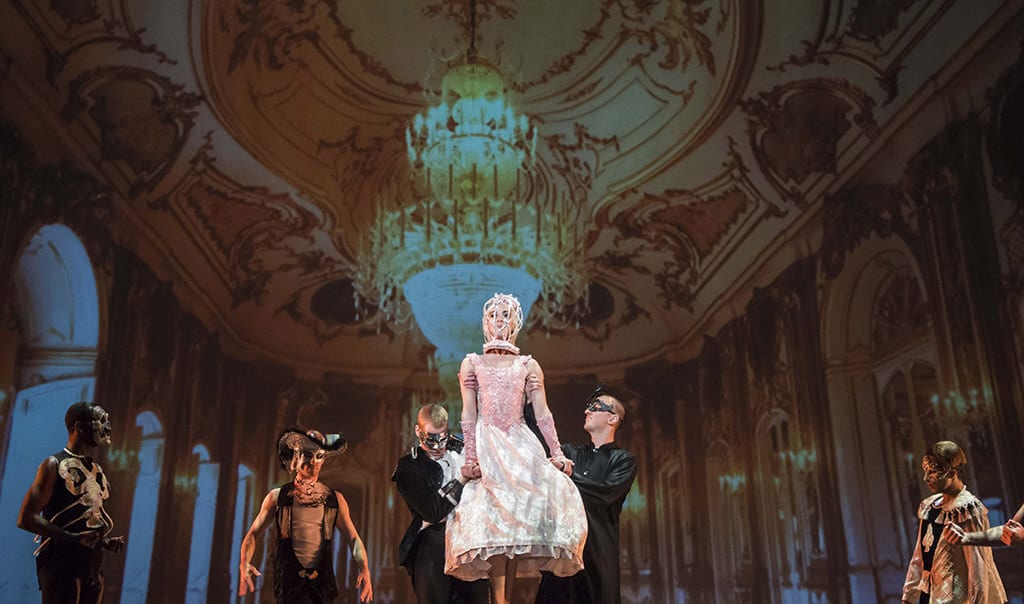This production of Romeo and Juliet, unusually, does not only use Prokofiev’s score, but mixes it with Vivaldi’s Four Seasons and contemporary pop music to create a show that is all about the teenagers. Adrienne Canterna, the choreographer who dreamed up the concept, has cut the parents completely, and instead extended the roles of the Friar and Nurse to act as Romeo and Juliet’s confidants, respectively. This decision seems to be well-founded – there isn’t a point in the performance that would have been enhanced by the inclusion of the four parents, and the smaller cast actually at times makes for more enjoyable viewing, allowing us to focus more closely on Romeo and Juliet themselves. The only disadvantage of this decision is that it effectively removes the context of the feud as a family issue, and makes it seem more like teenagers taking things too far.
As well as Friar Laurence and the Nurse, the role of Paris is also extended – although he is still characterised as smarmy and not particularly likeable, we are given more opportunity to sympathise with him than we get in the text of the play, witnessing him rehearsing his proposal to Juliet as well as the proposal itself. Benvolio, too, is given more to do, taking Friar Laurence’s letter to Romeo in place of Friar John – again, reducing the cast of characters and allowing us to get a clearer perspective on those who remain, as those who are integral to the story. The order of the scenes has also been altered to fit with this reading of the text, but not to a point where it feels gratuitous, and other scenes have been added – probably most notably, Romeo’s bachelor party, which sees Romeo, Benvolio and Mercutio dancing to LMFAO’s Party Rock Anthem.
The major variation in this production is, of course, the use of contemporary music alongside the classical scores, which works surprisingly well. There are occasional moments where the music fades out abruptly, but these seem to be more of a technical issue, and in fact the juxtaposition of old and modern works well: the prologue, for example, when all the characters are introduced, is danced to Vivaldi, but the next scene, a bar fight between the Montagues and Capulets, is to the sound of Walk This Way, a contrast which sets the tone for the rest of the show. The different styles of dance are not strictly limited to their respective music, either: often, the two forms are mixed, transitioning from ballet to hip-hop back to ballet many times within each scene, blurring the lines between old and new. Some of the best scenes occur when this happens, as the romantic ballet turns into sensual hip-hop, capturing the tension between love and sex that’s so important as a teenager.
The screen at the back of the stage is a good idea, and sometimes used to great effect – as when Juliet, dreaming about Romeo, dances to Katy Perry’s Teenage Dream against a backdrop of raining hearts and lipsticks – however, it often feels like the screen is not being used to its full potential, and could be used much more consistently. The choreography is brilliant from beginning to end, as is the dancing. Romeo is well-acted, especially after killing Tybalt, giving a very emotive performance; Juliet, on the other hand, although well-acted, feels somehow lacking – she is somewhere in between the two common interpretations of Juliet, as either the original Troubled Teen, or a complete innocent – and it feels like she could do with a dose of angst, a portrayal which would work especially well within the updated context of this production. Although there are a few issues which could do with ironing out, this is a production which combines the contemporary with the classical almost seamlessly, and reminds us yet again that Romeo and Juliet is a timeless story – from whichever angle we approach it.

